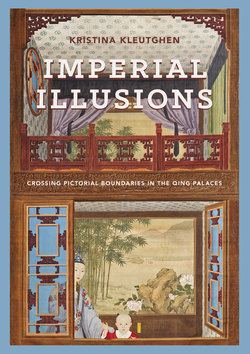Читать книгу Imperial Illusions - Kristina Kleutghen - Страница 75
На сайте Литреса книга снята с продажи.
Оглавлениеthe preface to the Brief Guide (the full text and a translation of which can be found in the Chinese text appendix) by distinguishing two types of numbers: those used for the precise measurements and calculations surrounding tangible and visible things in the phenomenal world, and those used for intangible and invisible phenomena such as yin and yang and the flow of time. Citing several of the earliest Chinese mathematical texts, and sagely ancient rulers such as the Yellow Emperor and the Duke of Zhou who used them,31 Nian offers irrefutable precedents for an emperor’s use of mathematics. He then explicitly blames the scholar-official class (xueshidaifu) for the demise of mathematics in China, implicitly distinguishing himself from this group, and praises Kangxi’s restoration of it by comparing it to sight being restored to the blind. Naming the two translated Western mathematical treatises that most affected Kangxi,32 Elements of Geometry (Jihe yuanben, a translation of Euclid’s Elements) and Elements of Calculation (Suanfa yuanben), both produced by the Jesuits, Nian singles out their practical calculations: for example, the areas of farm fields and the volume of spheres in Elements of Geometry, and logarithms (jiashu; literally “false numbers”) in Elements of Calculation.33 Praising Yongzheng for completing Kangxi’s Essence of Numbers and predicting that it would encourage scholar-official use of mathematics as one of the Confucian Six Arts, Nian concludes the Brief Guide by specifying that he studies measurable things in the phenomenal world. Ultimately, he defines the treatise as an accessible beginner’s introduction to topics presented in more advanced and abstract forms thirteen years earlier in Essence of Numbers.
The body of the treatise progresses sequentially through the equations required to calculate the circumference, perimeter, diameter, side length, and area for circles, squares, inscribed circles, or circumscribed polygons (2r–15v). These basic calculations reveal a fixed ratio, and therefore a logarithm can be used to facilitate those calculations, which Nian applies to polygons of up to ten sides. Moving from two-dimensional polygons to three-dimensional polyhedrons, he then presents the same calculations and logarithms for spheres, cubes, and polyhedrons of four, eight, twelve, and twenty faces,34 in addition to cylinders, cones, truncated cones, circumspheres, and inspheres (15v–29v). The remainder of the text consists of illustrated logarithmic tables for each of those calculations (30r–40v), as well as logarithmic tables for calculating the weights and volumes of various substances such as precious and semiprecious metals, stones, woods, mercury, water, and oil, as well as precious exotic foreign materials, including elephant ivory and amber (41r–42r). The table of real materials that concludes the treatise confirms Nian’s utilitarian motivations as presented in the preface, transforming the abstract logarithmic calculus applied to polyhedron proportions into a practical skill inseparable from understanding real objects and substances in the reader’s world.
The ability to quickly calculate or even simply gauge the volume of a substance in a container, and therefore the value of that substance, would have been essential practical knowledge for both a Jingdezhen superintendent and a Grand Canal customs commissioner. After nearly a decade in each of these positions, Nian must have had considerable
